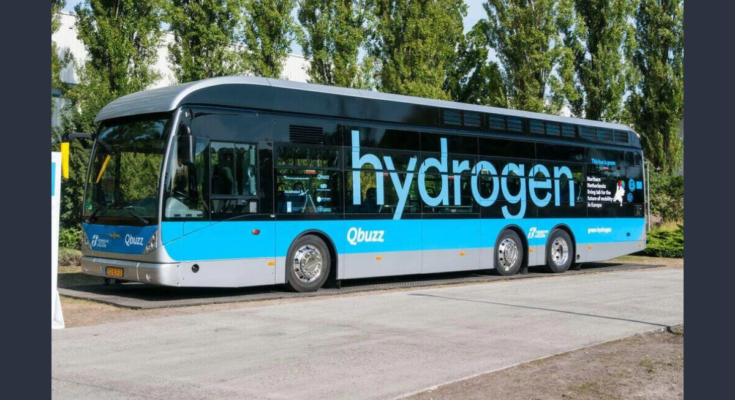With global efforts to fight climate change, hydrogen is becoming essential in the shift towards renewable energy. Its ability to store and transport renewable energy, like wind and solar power, supports goals for reducing carbon emissions worldwide.
Moreover, governments are investing heavily in hydrogen technologies and infrastructure, driving innovation across industries. Advancements in production, storage, and transportation are improving efficiency and lowering costs, making hydrogen a more competitive clean energy option. Industries such as transportation, manufacturing, and energy are increasingly using hydrogen for various applications, driving demand. International collaborations are also speeding up the development of a global hydrogen economy.
The global market is projected to grow at a CAGR of 10.4% to reach USD 47.83 billion by late 2034. Overall, the hydrogen market’s growth highlights its crucial role in creating a sustainable energy future.
Market Landscape:
- In the US, a rapid surge in investment is witnessed, especially in hydrogen fuel cell technology for transportation, alongside significant research and development efforts. As per FACT.MR, the North American market is expected to witness a 10.9% CAGR during the forecast period (2024-2034).
- In the UK, government support for hydrogen initiatives is driving the development of infrastructure and technologies, particularly in heavy industries like steel manufacturing.
- Meanwhile, in Asia, countries such as Japan, South Korea, and China are leading the way with ambitious hydrogen strategies, focusing on industrial-scale projects and international collaboration to become global leaders in hydrogen technology and adoption.
Leading Companies in the Global Hydrogen Market
The following hydrogen companies are pioneers in the field, developing new technologies, producing hydrogen at the largest, and supporting sustainable initiatives.
- Neom Green Hydrogen Company: Based in Saudi Arabia, NGHC is building the world’s largest green hydrogen plant, set to produce up to 600 tons of carbon-free hydrogen daily by 2026. With an investment of $ 8.4 Billion (about $26 per person in the US) secured in early 2023, the project aims to revolutionize green hydrogen production. Nadhmi Al-Nasr, Chairman of NGHC, sees it as a pioneering step toward global sustainable transportation.
- Air Products: Air Products is a global industrial gas leader based in Pennsylvania, USA, specializing in LNG processing and hydrogen technology. It’s partnering with Associated British Ports to cut emissions through the UK’s first large-scale green hydrogen facility, potentially eliminating 580,000 tons of greenhouse gases annually. In Saudi Arabia, a $ 7 billion (about $22 per person in the US) joint venture aims to produce 650 tons of carbon-free hydrogen daily by 2025.

- Plug Power: Headquartered in Latham, New York, Plug Power is at the forefront of creating a complete green hydrogen system. They make clean hydrogen using renewable sources like electricity and water, and they’re the first to establish a profitable market for hydrogen fuel cells. With electric powertrain technology, they’ve already installed 60,000 fuel cell systems, aiming to produce 2,000 tons of green hydrogen daily by 2030.
- BP: Based in London, England, BP is striving to become net-zero by 2050 or sooner, with hydrogen playing a central role in its plan. By 2030, BP aims to produce 0.5 to 0.7 million tonnes per year of mainly green hydrogen, while also exploring opportunities for blue hydrogen. They’re currently developing H2Teesside, a significant blue hydrogen facility, and HyGreen Teesside, a large-scale green hydrogen project. Together, these could contribute 15% towards the UK’s target for low-carbon hydrogen production by 2030.
- Siemens: Headquartered in Munich, Germany, Siemens Energy’s Silyzer technology efficiently produces green hydrogen from water and renewable energy using PEM electrolysis. It can generate between 100 and 2,000 kg of hydrogen per hour, consuming 10 liters of water per kilogram. Production of electrolysis stacks will begin in Berlin in 2023, scaling up to three gigawatts annually by 2025.
- Lhyfe: Lhyfe, headquartered in France, stands out as a pioneering force in Europe’s transition to sustainable energy. CEO Matthieu Guesné’s announcement of the world’s inaugural floating hydrogen production site marks a significant milestone in the company’s journey.
- First Hydrogen: Based in Vancouver, Canada, First Hydrogen focuses on green hydrogen to reduce emissions and facilitate the shift to zero-emission fleets. Their vehicles use hydrogen and fuel cell technology, with quick refueling and long ranges.
- Linde: Linde, headquartered in the United Kingdom, is a top provider of PEM electrolyzer tech, offering complete green hydrogen solutions and producing various types of hydrogen: grey, blue, and green. According to Linde, grey and blue hydrogen play crucial roles as we transition to green hydrogen.
- AMEA Power: AMEA Power, based in Dubai, has a clean energy portfolio of over 6GW across 20 countries. They’ve partnered with the Government of Egypt to develop a 10,000 MW green hydrogen project, aligning with Egypt’s vision to become a key hub for green hydrogen production.




